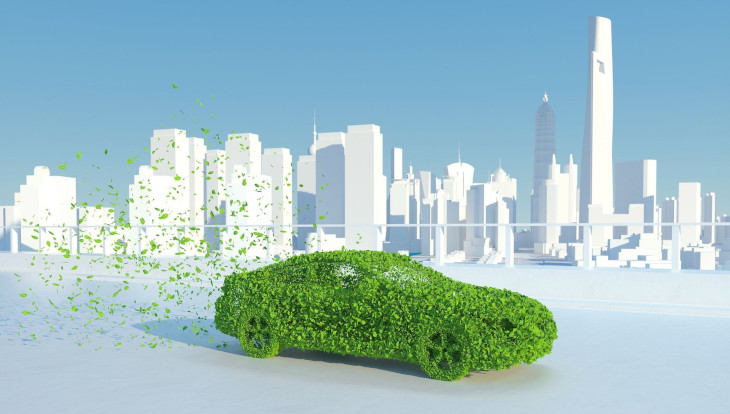By now, companies and industries have recognized that sustainable management is essential. Customers and investors demand it, as do employees, society, politicians, and regulators. This also applies to the automotive industry, which is in the spotlight because of the high share of CO2 emissions caused by road transportation. 89 percent of the executives surveyed for a Deloitte study see sustainability as a central element of their business activities.
But as important as the topic of sustainability is, many people still don’t quite realize that it’s about much more than producing less plastic, encouraging e-mobility or making production processes greener. There must be a holistic rethinking that the NDS Association and its members must embrace just as much as many others across our global economy and society.
Granted: At first glance, maps or a data standard seem to have little to do with sustainability. But that is only true at first glance. First of all, we are all responsible for understanding, questioning and, if necessary, reflecting upon the impact of our actions in our personal and business lives. Let’s look at why an automotive industry data standard such as NDS should incorporate sustainability.
Integral elements of sustainability are research and innovation activities – the use of science to develop innovative technologies. The question is: How can a technology and data standard like NDS help consume fewer resources, achieve greater reuse, and better scale for a sustainable future?

There is undoubtedly a link to the challenges we are all working on. The primary goal is to make automobility more comfortable, safer, and less wasteful, thus reducing the carbon footprint. Modern and reliable navigation has been proven to help shorten routes by avoiding unnecessary detours and optimizing routes taking the current traffic situation into account.
Furthermore, driver assistance systems support the driver with safety and comfort aspects. These systems always know the maximum permissible speed, support drivers with keeping inside their lane, and guide headlights to better anticipate the road ahead. And driver assistance systems also support ecological aspects. They can select the right gear to save fuel, activate advanced cruise control systems or eco-driving modes, and provide guidance to hybrid vehicles on where to switch to drive electrically. And as automated driving becomes more widespread, it will continue to change mobility as we know it and its impact on the ecosystem.
There is a huge wave of change ahead of us in the automotive industry. That change is not only coming from more advanced levels of assistance systems and automated driving. Change is driven by the software that powers these features. Change is the automotive platforms that are becoming even more scalable and flexible when those platforms are electric. And it is software that powers electric vehicle platforms. Change is new players that join and shake up the industry. We need to evolve to be responsive to change.
Map data in NDS and software using NDS maps are key to navigation, intelligent speed assistance, advanced driver assistance systems, and automated driving. There are three central aspects that are significantly driving changes in the field of mobility and therefore be looked at more closely: Hardware, software and data.

On the hardware side, companies should invest more in data connectivity and software instead of data storage space. Software must be intelligent and determine how much data is loaded into a vehicle and when. Map software components should also be designed and built to support the full range of functions, not just one problem area. This allows them to support each other and scale from basic functions such as intelligent speed assistance to ADAS, navigation, and automated driving.
In addition, the map data to support the functions should be brought into the vehicle by a single map management component that connects to map services through standardized interfaces and then passes the map data to the various functions in the vehicle. Companies that want to provide their customers with a seamless experience that spans multiple different brands and devices need the best data everywhere with the greatest possible granularity, accuracy, and data freshness.
There is only one way to achieve this: Making the most of software development, continuous feedback loops and learning, and using industry data standards to make data easier to process, publish, and connect. It is precisely this standardization of map data formats and interfaces for the automotive industry that is the mission of the NDS Association and its members. NDS is the global standard for map data in automotive eco-systems. And with NDS.Live we define and develop a further development of this worldwide standard. NDS.Live is paving the way for further development that will enable more modular and lower data consumption. This is important to enable networked solutions that consume and use data intelligently and on demand. The result is cost benefits, scalability, and a superior user experience.
Map data is not only the foundation for navigation, but also for driver assistance and automated driving. This evolution is accelerating, and with the emergence of electric vehicle platforms, there are new industry players taking an approach that will further accelerate market dynamics and change.
If we adapt to this change by making smart hardware decisions and understanding networked software as a data-driven organism, we will continue to win.
Back to news →